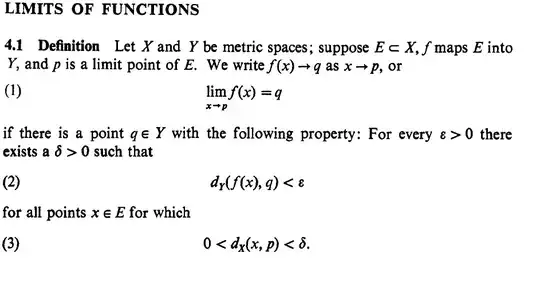What's the difference between two concepts, 1. limit of function and 2. continuous function? I looked at their definitions in the textbook written by Rudin and it's so hard to differentiate between them.
They look similar to me.
[Edited] I can't find the difference between two definition. If they are the same, it means that a function is continous if and only if every point is a limit point. But this is not true. So I want to know what makes a difference between a point being a limit of function and function being itself continuous
Images of Definitions

